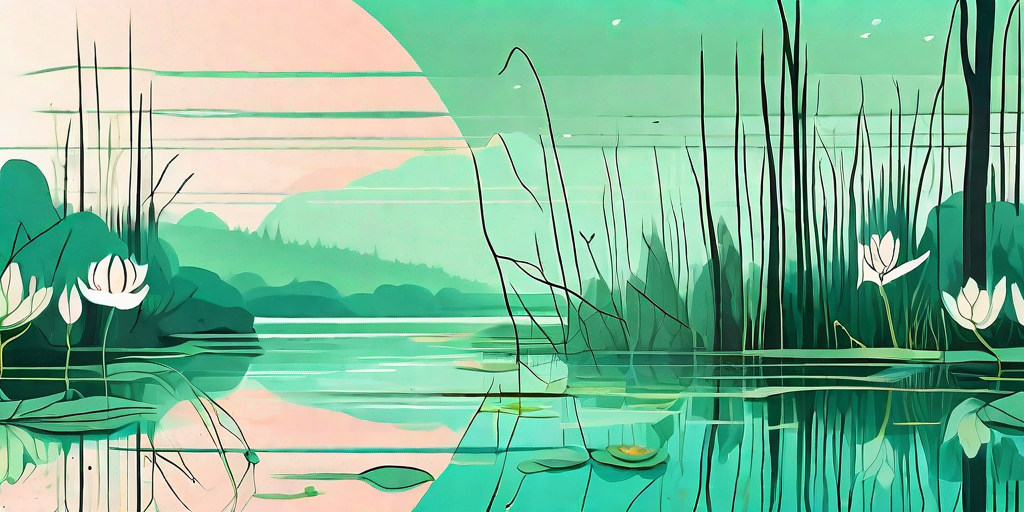
Swamp flowers, often overlooked in favor of their more glamorous cousins in the garden, are a treasure trove of beauty and intrigue. These hardy plants, thriving in the muck and mire, are nature's best-kept secret. So, grab your wellies and let's dive into the wonderful world of swamp flowers!
The Unseen World of Swamp Flowers
Swamp flowers, or wetland plants, are a diverse group of flora that have adapted to live in water or in soil that is periodically anaerobic (depleted of oxygen). They are the unsung heroes of the plant world, bravely blooming where few others dare to grow.
These plants are not just beautiful, they're also vital for the health of our planet. They act as natural water filters, trapping pollutants and improving water quality. They also provide habitat for a myriad of creatures, from insects to birds and mammals.
Common Types of Swamp Flowers
There are thousands of species of swamp flowers, each with its own unique charm. Some of the most common include the Water Lily, Lotus, Pickerelweed, and the Swamp Rose. Each of these brings a unique splash of color and life to the often murky swamp environment.
But don't let their delicate appearance fool you. These flowers are tough as nails, able to withstand flooding, nutrient-poor soil, and even fire. It's this resilience that makes them so fascinating to study and observe.
Exploring Swamps for Flowers
So, how does one go about exploring swamps for these hidden gems? Well, it's not as simple as taking a stroll in the park. Swamps can be challenging environments to navigate, but with a little preparation and a sense of adventure, it can be a rewarding experience.
First, you'll need the right gear. Waterproof boots are a must, as are long pants and sleeves to protect against insects and thorny plants. A good field guide can also be invaluable for identifying different species.
Best Times to Visit
Swamp flowers can be found blooming throughout the year, but the best time to visit is in the spring and summer when the majority of species are in bloom. Early morning or late afternoon are also ideal times, as many flowers close up during the heat of the day.
Remember, patience is key when exploring swamps. It can take time to spot the more elusive species, but the thrill of discovery is well worth the wait.
Conservation of Swamp Flowers
Despite their importance, swamp flowers and their habitats are under threat from pollution, climate change, and habitat destruction. But there are ways we can help protect these unique ecosystems and their floral inhabitants.
Supporting local conservation efforts is a great start. Many organizations work to protect and restore wetlands, and they often rely on volunteers and donations. You can also help by spreading the word about the importance of swamp flowers and their habitats.
Creating Your Own Swamp Garden
If you're really smitten with swamp flowers, why not create your own swamp garden? It's a great way to enjoy these plants up close, and it can also provide valuable habitat for local wildlife.
Creating a swamp garden can be as simple as digging a shallow hole, lining it with a pond liner, and filling it with water and wetland plants. Just remember to choose plants that are native to your area to support local biodiversity.
Frequently Asked Questions
Are swamp flowers dangerous?
No, swamp flowers are not dangerous. However, some can be toxic if ingested, so it's always a good idea to avoid eating them unless you're absolutely sure they're safe.
Can I pick swamp flowers?
While it might be tempting to pick a beautiful swamp flower, it's best to leave them where they are. Picking flowers can damage the plant and disrupt the local ecosystem. Plus, they're much prettier in their natural habitat!
What animals rely on swamp flowers?
A wide variety of animals rely on swamp flowers for food and habitat, including insects, birds, amphibians, and mammals. Even some species of fish use swamp plants for shelter and spawning grounds.
Conclusion
So there you have it, a cheeky peek into the hidden world of swamp flowers. These hardy plants are a testament to the resilience and beauty of nature, thriving in conditions that would make most garden flowers wilt. So next time you're near a swamp, take a moment to appreciate these unsung heroes of the plant world. Who knows, you might just discover a new favorite flower!















